Apr 3rd, 2025 19:32 EDT
change timezone
Latest GPU Drivers
New Forum Posts
- New AM5 build [help] (21)
- Someone knowledable on memory voltages want to chime in? (also what is PMIC and should I be worried) (28)
- RX 9000 series GPU Owners Club (126)
- Is RX 9070 VRAM temperature regular value or hotspot? (308)
- PCI 4.0 16x slot reported as a PCI 5.0 8x with the AMD 9070 XT Reaper GPU (41)
- [electronics] - STREAM DECK during gaming? (1)
- Homepage list - reviews - no author, no number of comments (1)
- AIO - 120mm cpu cooler? (43)
- Help me pick a UPS (52)
- Microprose: Falcon 5.0 - Well under development- yeay (12)
Popular Reviews
- DDR5 CUDIMM Explained & Benched - The New Memory Standard
- Sapphire Radeon RX 9070 XT Pulse Review
- SilverStone Lucid 04 Review
- PowerColor Radeon RX 9070 Hellhound Review
- Sapphire Radeon RX 9070 XT Nitro+ Review - Beating NVIDIA
- Pwnage Trinity CF Review
- Palit GeForce RTX 5070 GamingPro OC Review
- ASRock Phantom Gaming B850 Riptide Wi-Fi Review - Amazing Price/Performance
- Corsair RM750x Shift 750 W Review
- AMD Ryzen 7 9800X3D Review - The Best Gaming Processor
Controversial News Posts
- MSI Doesn't Plan Radeon RX 9000 Series GPUs, Skips AMD RDNA 4 Generation Entirely (146)
- Microsoft Introduces Copilot for Gaming (124)
- AMD Radeon RX 9070 XT Reportedly Outperforms RTX 5080 Through Undervolting (119)
- NVIDIA Reportedly Prepares GeForce RTX 5060 and RTX 5060 Ti Unveil Tomorrow (115)
- Over 200,000 Sold Radeon RX 9070 and RX 9070 XT GPUs? AMD Says No Number was Given (100)
- NVIDIA GeForce RTX 5050, RTX 5060, and RTX 5060 Ti Specifications Leak (96)
- Retailers Anticipate Increased Radeon RX 9070 Series Prices, After Initial Shipments of "MSRP" Models (90)
- Nintendo Switch 2 Launches June 5 at $449.99 with New Hardware and Games (88)
Wednesday, October 9th 2019

G.SKILL Releases New DDR4 32GB Module Specs with Memory Kits Up to 256GB
G.SKILL International Enterprise Co., Ltd., the world's leading manufacturer of extreme performance memory and gaming peripherals, is announcing new high-capacity, high-performance memory kit specifications based on 32 GB modules across several memory series, including Trident Z Royal DDR4-3200 CL16 256 GB (32 GB x8), Trident Z Royal DDR4-4000 CL18 128 GB (32 GB x4), Trident Z Neo DDR4-3600 CL18 128 GB (32 GB x4), and Trident Z Neo DDR4-3800 C18 64 GB (32 GB x2). Built with the latest high-density 16Gb components, these DDR4 memory kits are the perfect choice for pushing the performance limits of high memory capacity.
With the availability of higher density memory at the consumer level, G.SKILL memory is pushing the performance boundary to DDR4-3200 on current HEDT platforms with up to 8 modules of 32 GB for a total of 256 GB. As shown in the screenshot below, the Trident Z Royal DDR4-3200 CL16 256 GB (32GBx8) is validated on the latest X299-based ASUS ROG Rampage VI Extreme Encore motherboard and the Intel Core i9-9820X processor. Such extremely high-capacity memory kits are the ideal choice for powerful workstations or for systems running multiple virtual machines.Breaking the DDR4-4000 Barrier with 32 GB Modules - Trident Z Royal DDR4-4000 CL18 128 GB (32 GB x4)
High capacity 32 GB modules are no slouch when it comes to high frequency, breaking through DDR4-4000 CL18 with 128 GB (32GBx4), as shown with the ASUS ROG Rampage VI Extreme Encore motherboard and Intel Core i9-9820X processor.Massive High-Speed 128 GB on Dual-Channels - Trident Z Neo DDR4-3600 CL18 128 GB (32 GB x4)
Even without a HEDT system, it's now possible to reach a total of 128 GB on current 4-DIMM motherboards. Under the AMD-optimized Trident Z Neo series, the following screenshot below shows the Trident Z Neo DDR4-3600 CL18 128 GB (32 GB x4) being stress-tested on the MSI MEG X570 GODLIKE motherboard and the AMD Ryzen 5 3600 processor.Continuing to Push the Limits of AMD Ryzen 3000 - Trident Z Neo DDR4-3800 CL18 64 GB (32 GB x2)
At the extreme limits of AMD Ryzen 3000 platform, G.SKILL is also releasing a blazing dual-module behemoth kit of 64 GB (32 GB x2) at DDR4-3800 CL18 under the Trident Z Neo series, validated on the MSI MEG X570 GODLIKE motherboard and AMD Ryzen 9 3900X processor, as shown below.
Specifications List
For a list of memory specifications based on the new 32GB modules, please refer to the table belowAvailability & XMP 2.0 Support
These ultra-high capacity performance memory specifications will support the latest Intel XMP 2.0 for easy overclocking and will be available via G.SKILL worldwide distribution partners in Q4 2019.
With the availability of higher density memory at the consumer level, G.SKILL memory is pushing the performance boundary to DDR4-3200 on current HEDT platforms with up to 8 modules of 32 GB for a total of 256 GB. As shown in the screenshot below, the Trident Z Royal DDR4-3200 CL16 256 GB (32GBx8) is validated on the latest X299-based ASUS ROG Rampage VI Extreme Encore motherboard and the Intel Core i9-9820X processor. Such extremely high-capacity memory kits are the ideal choice for powerful workstations or for systems running multiple virtual machines.Breaking the DDR4-4000 Barrier with 32 GB Modules - Trident Z Royal DDR4-4000 CL18 128 GB (32 GB x4)
High capacity 32 GB modules are no slouch when it comes to high frequency, breaking through DDR4-4000 CL18 with 128 GB (32GBx4), as shown with the ASUS ROG Rampage VI Extreme Encore motherboard and Intel Core i9-9820X processor.Massive High-Speed 128 GB on Dual-Channels - Trident Z Neo DDR4-3600 CL18 128 GB (32 GB x4)
Even without a HEDT system, it's now possible to reach a total of 128 GB on current 4-DIMM motherboards. Under the AMD-optimized Trident Z Neo series, the following screenshot below shows the Trident Z Neo DDR4-3600 CL18 128 GB (32 GB x4) being stress-tested on the MSI MEG X570 GODLIKE motherboard and the AMD Ryzen 5 3600 processor.Continuing to Push the Limits of AMD Ryzen 3000 - Trident Z Neo DDR4-3800 CL18 64 GB (32 GB x2)
At the extreme limits of AMD Ryzen 3000 platform, G.SKILL is also releasing a blazing dual-module behemoth kit of 64 GB (32 GB x2) at DDR4-3800 CL18 under the Trident Z Neo series, validated on the MSI MEG X570 GODLIKE motherboard and AMD Ryzen 9 3900X processor, as shown below.
Specifications List
For a list of memory specifications based on the new 32GB modules, please refer to the table belowAvailability & XMP 2.0 Support
These ultra-high capacity performance memory specifications will support the latest Intel XMP 2.0 for easy overclocking and will be available via G.SKILL worldwide distribution partners in Q4 2019.
Apr 3rd, 2025 19:32 EDT
change timezone
Latest GPU Drivers
New Forum Posts
- New AM5 build [help] (21)
- Someone knowledable on memory voltages want to chime in? (also what is PMIC and should I be worried) (28)
- RX 9000 series GPU Owners Club (126)
- Is RX 9070 VRAM temperature regular value or hotspot? (308)
- PCI 4.0 16x slot reported as a PCI 5.0 8x with the AMD 9070 XT Reaper GPU (41)
- [electronics] - STREAM DECK during gaming? (1)
- Homepage list - reviews - no author, no number of comments (1)
- AIO - 120mm cpu cooler? (43)
- Help me pick a UPS (52)
- Microprose: Falcon 5.0 - Well under development- yeay (12)
Popular Reviews
- DDR5 CUDIMM Explained & Benched - The New Memory Standard
- Sapphire Radeon RX 9070 XT Pulse Review
- SilverStone Lucid 04 Review
- PowerColor Radeon RX 9070 Hellhound Review
- Sapphire Radeon RX 9070 XT Nitro+ Review - Beating NVIDIA
- Pwnage Trinity CF Review
- Palit GeForce RTX 5070 GamingPro OC Review
- ASRock Phantom Gaming B850 Riptide Wi-Fi Review - Amazing Price/Performance
- Corsair RM750x Shift 750 W Review
- AMD Ryzen 7 9800X3D Review - The Best Gaming Processor
Controversial News Posts
- MSI Doesn't Plan Radeon RX 9000 Series GPUs, Skips AMD RDNA 4 Generation Entirely (146)
- Microsoft Introduces Copilot for Gaming (124)
- AMD Radeon RX 9070 XT Reportedly Outperforms RTX 5080 Through Undervolting (119)
- NVIDIA Reportedly Prepares GeForce RTX 5060 and RTX 5060 Ti Unveil Tomorrow (115)
- Over 200,000 Sold Radeon RX 9070 and RX 9070 XT GPUs? AMD Says No Number was Given (100)
- NVIDIA GeForce RTX 5050, RTX 5060, and RTX 5060 Ti Specifications Leak (96)
- Retailers Anticipate Increased Radeon RX 9070 Series Prices, After Initial Shipments of "MSRP" Models (90)
- Nintendo Switch 2 Launches June 5 at $449.99 with New Hardware and Games (88)
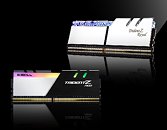
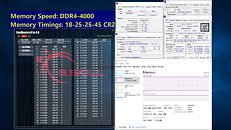
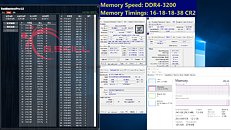
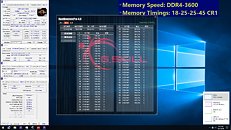
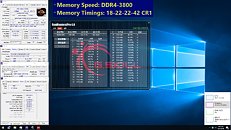
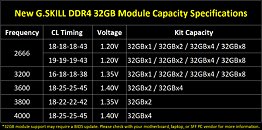
17 Comments on G.SKILL Releases New DDR4 32GB Module Specs with Memory Kits Up to 256GB
So much yes for 256GB!!
32MB modules with decent speeds, great news
Bravo! :D
(8) 32GB modules of Gskill Trident Z Royal Silver emitting a deep soothing blue glow while you work. :)
Rampage VI Extreme Encore motherboard launching soon. Yup, I can imagine that. :D
How much is all this su-peeed is gonna cost us ?
I predict 1 arm, 1 leg, 1 testicle, 1 kidney, 1 side of your brain, and your BANKER's GOLD & PLATNIUM Cards, hehehe :cry: :eek: o_O.....
Thank god I don't need 32Gb sticks for my servers.. 24 slots of RAM in each of those?? Hell no!! lol
I meant
32 Gigs of RAM in one module :D
Would have been one big stick of ram with 32Mb modules on it for 32Gb :D :D :laugh:
its not for every one
guys your post about price tag make non sense, you should be happy about this setup and speed
Certainly NOT an attainable ddr4 speed with ambient cooling. And even if it was, or when it's achieved with LN2 cooling - the AIDA memory latency penalty using AMD's Infinity Fabric beyond 3800Mhz makes spending more for kits tested/rated higher than 3800Mhz kind of a waste of dollars, since it doesn't gain any increase in responsiveness or lower latency.
With Ryzen I believe the 3800Mhz (3866Mhz?) kits give you the lowest possible latency around 64ns.
or as the slide calls it Raw Memory Latency, since you know, it's so very RAW. :p